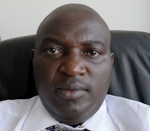 This post was originally published on the IntraHealth International blog.
This post was originally published on the IntraHealth International blog.
Picture the following scenario: A large warehouse, 13,000 square meters, on the outskirts of Nairobi, Kenya, about 20 kilometers from the city center, is so full of drugs and other medical supplies that there is no space for new deliveries. The warehouse is packed with everything from gauze bandages to malaria pills to antiretroviral drugs—valuable and necessary medical supplies that people need. But the system used to manage and distribute these supplies with less paperwork and greater efficiency, known as the Enterprise Resource Planning system, is not working. This means nothing is moving in or out of the warehouse. Read more »
